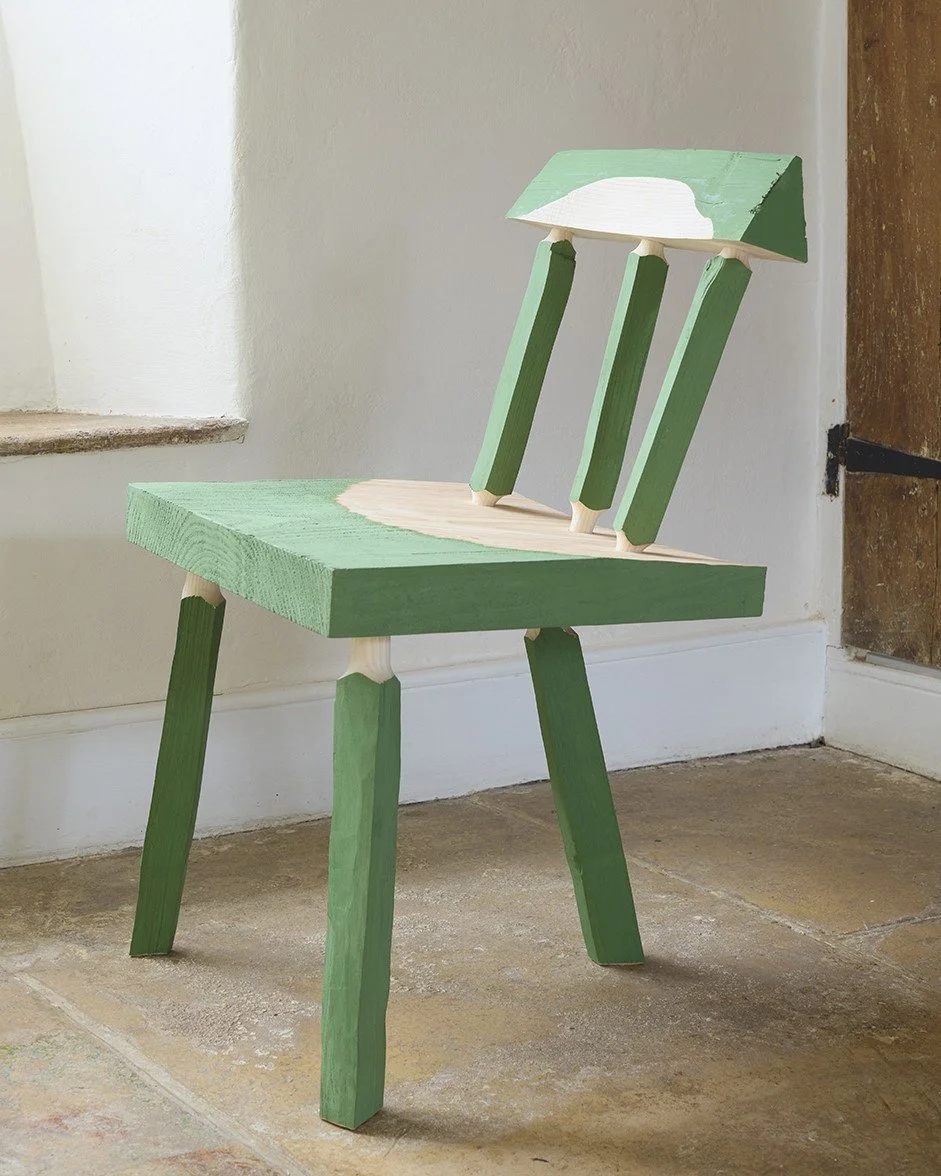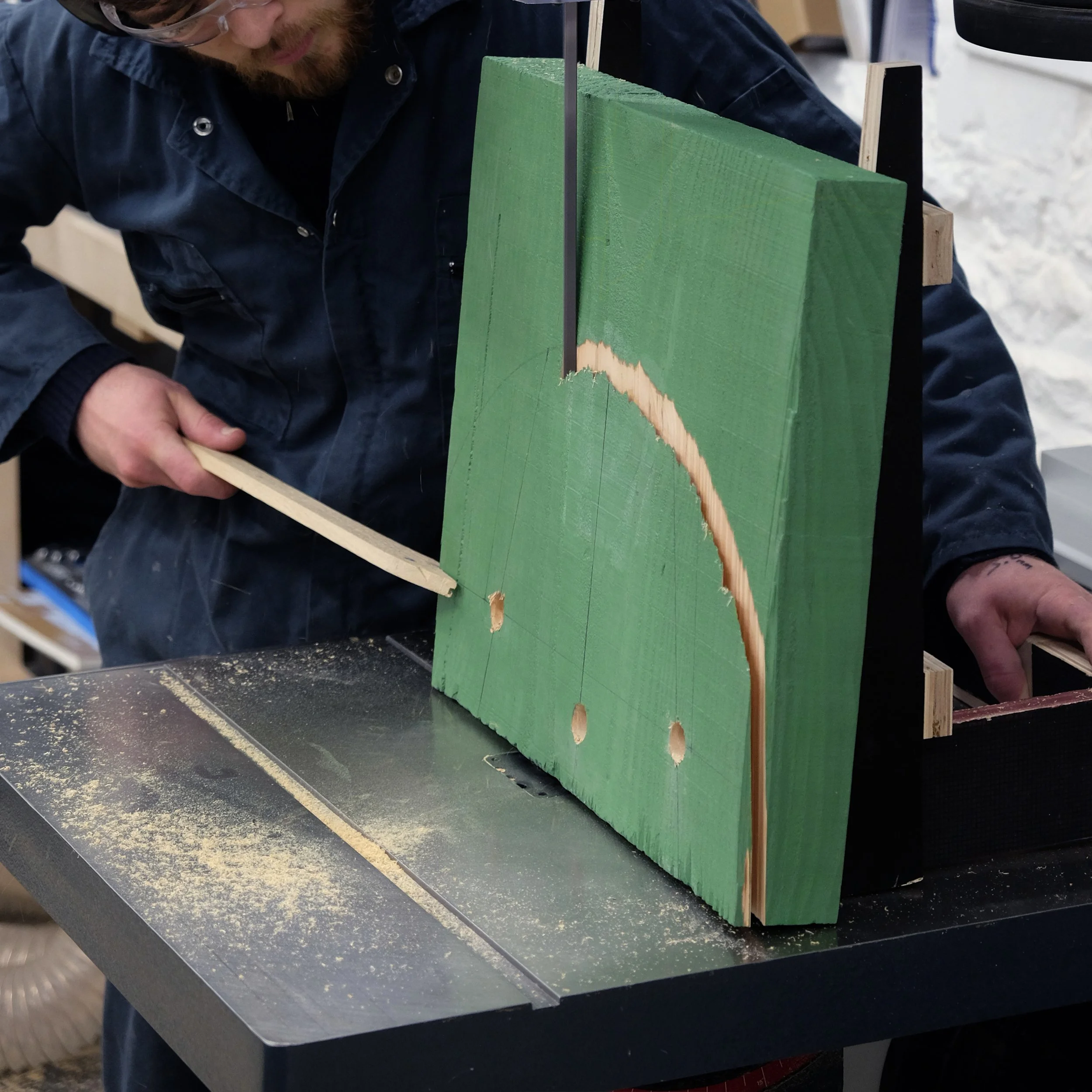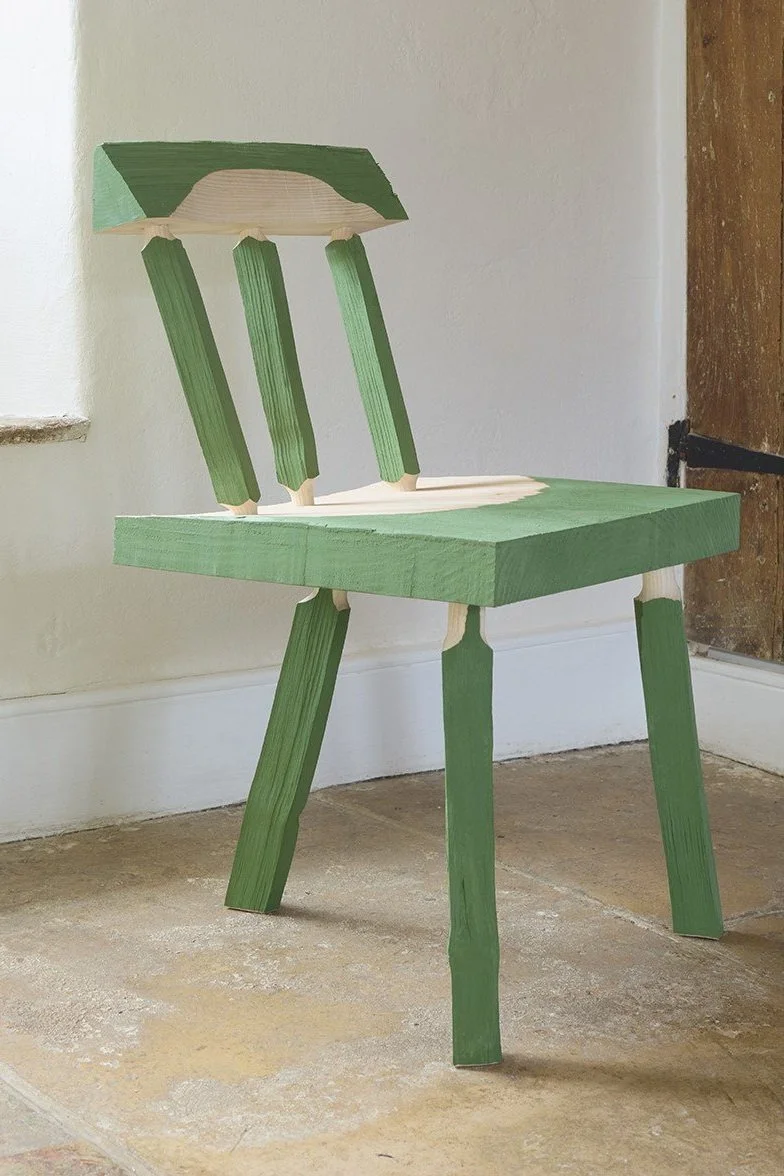Greenchair - 2023
Ash - 490 x 470 x 750
An attempt to reduce the cost of a handmade product by minimising the time spent making it, while avoiding monotony, poor quality, and soulless objects.
In this version of the Greenchair, all stock parts and lengths were coated with green milk paint before processing. This highlights any interventions or processing done by the craftsman.
This exercise is an exploration of my belief that handmade objects can be made accessible by distilling craft down to it’s essential elements only and doing away with gratuitous processessing.
I set a goal of making as many chairs as I could in a day. While aiming for speed, I was also determined to not loose what I believe are the essential elements to a well made, hand crafted object.
Limiting production to a single day helped avoid endless chasing of efficiency and division of labour. The restraint of a deadline also prevents the pursuit of perfection.
The context of the windsor chair was used to explore this idea. Almost all of the processes used deviate from traditional windsor techniques. This is a consequence of the restraint of time.
While visiting a managed woodland in September 2023, I was fascinated with the speed and efficiency that Andrew Hewitt was able to achieve when making fence posts and other products using his mobile sawmill.
The idea of Andrew traveling to various woodlands to produce products in situ using trees felled on site, brings to mind images of the bodgers turning chair legs in the Chiltern Hills. The bodgers were highly efficient, sometimes producing as many as 150 turned legs in a day from log to final shape.
My experience with Andrew and research into the bodgers led to this project, centered on being efficient without losing the soul of a hand crafted object.








